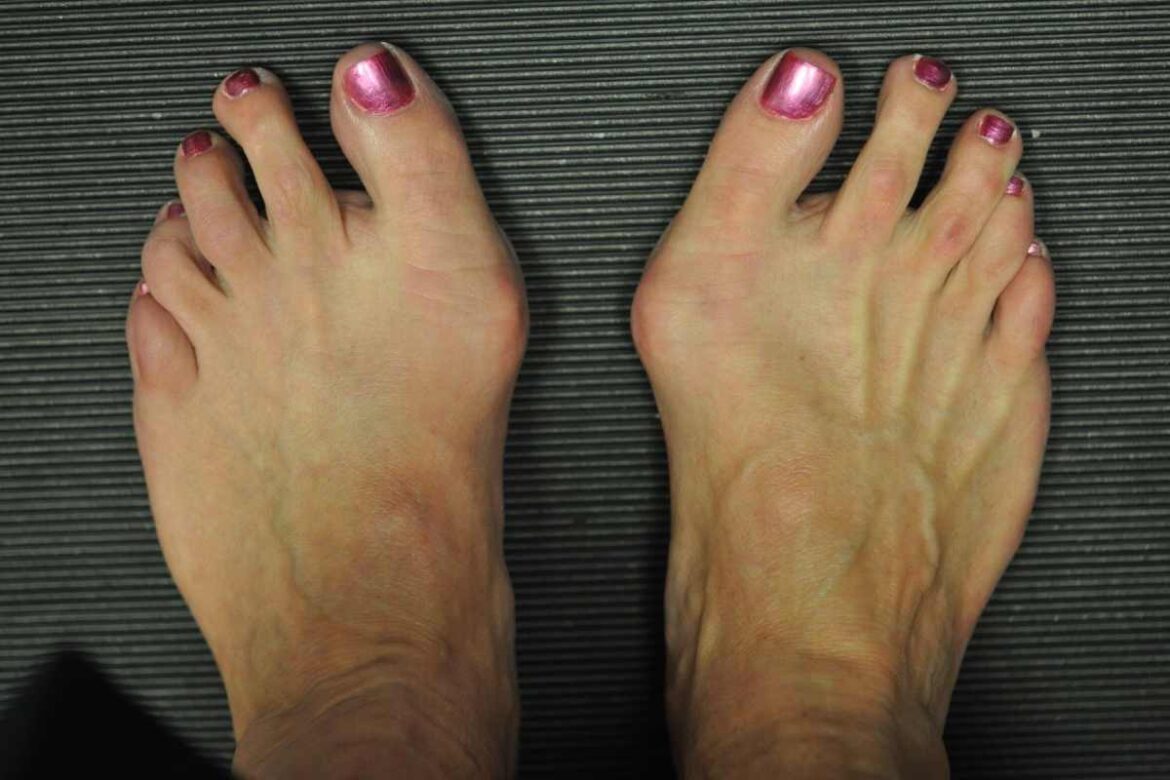You may have heard the term bunion thrown about, perhaps by a friend currently experiencing foot pain or an older family member who insists it is in their family. However, until you have had one, you may find yourself not quite certain what a bunion is or how it can seem to develop overnight. It starts as a little bump and continues to the point at which you can no longer fit into your shoes.
This guide will take you through what exactly a bunion is, what causes them, and why it is important to understand the cause of the issue before you rush to treatment.
First things first: What is a bunion after all?
It is a bony bump that develops on the side of your foot at the bottom of your big toe. However, that is not the complete picture.
It is not just an extra bone growing there, but it is your big toe joint (the metatarsophalangeal joint) moving out of position. Over time, the big toe will curve toward your other toes, and the bone just behind it will go outward toward your other toes to form that bump.
In the long run, this leads to:
- Redness and swelling of the joint
- Foot pain during walking or shoe wearing
- Toe joint stiffness
- Internal shoe-rubbing calluses or corns.
A bunion is not only an aesthetic problem. It alters the way your foot functions. This may cause pain in other parts, such as the ball of the foot, your ankle, or even your knees. Luckily, you can address the problem early with bunion treatment Norfolk, VA.
What causes bunions?
Bunions are not caused by one single factor. They are typically caused by a combination of things.
Genetics
You might tend to develop bunions because you inherited the same shape of your foot, or a bone structure that predisposes you to developing bunions. Perhaps your parents or your grandparents had bunions. That is why bunions may appear even in individuals who have never worn high-heeled shoes.
Foot mechanics
This can be a large factor in the way your foot moves when you walk, known as your gait. Having flat feet or low arches, or even some joint disorders, may cause greater pressure on the big toe joint, which makes it simpler for a bunion to develop.
Footwear choices
Although it is not the only thing to blame, shoes can certainly add to its acceleration. High heels or pegged footwear cramp your toes into small areas and exert undue pressure on the joint of the big toe. In the course of time, that pressure may drive the joint out of alignment.
Medical conditions
Arthritis can damage the joints in your feet. Rheumatoid arthritis predisposes your feet joints to bunions.
Trauma or injury
Previous trauma to your foot or your toe may alter the joint formation of your foot and predispose you to a bunion in the future.
Why it is important to know the cause
The management of bunions is not a matter of correcting the bump but attending to the issue of what has caused it. By rushing to treatment without having an idea about the cause, you might be lucky to have a reprieve, but it is only temporary.
For example:
When your bunion is mostly hereditary, your podiatrist may concentrate on sports shoes and custom orthotics to lessen the development.
Assuming it is related to what you wear on your feet, one of the easiest and most effective solutions would be to switch your footwear.
And in case arthritis complicates the problem, your treatment plan may involve anti-inflammatory exercises and sports that do not load the joints.
Popular treatment options
- Lifestyle modifications: Getting wider, more supportive shoes and avoiding high heels.
- Padding & Orthotics: Limiting pressure and correcting alignment.
- Exercises & stretching -Maintaining flexibility in the toe joint.
- Medication: Treating pain and inflammation.
- Surgery: Restructuring or realigning the bone and joint. This is the option when other procedures prove inadequate.
The appropriate decision is based on the severity of your bunion, your symptoms, and your lifestyle. That is why it is worth getting a diagnosis done before making a decision.
Reasons to visit a podiatrist
Not all bunions require an operation, but they all require a check. When you experience:
- Constant foot pain
- An enlarging or fluctuating bump
- Trouble finding comfortable footwear
- Redness or swelling that does not heal.
It is time to let Mountain Spring podiatry experts have a look. The sooner you detect it, the more chances you have of slowing it down or perhaps halting it.
The takeaway
The bunion is not just a part of aging, and it is not something you should live with. It means that there is a misalignment somewhere in your foot structure, and a misalignment can be due to anything in your feet, to genetics, or down to the choice of shoes that you wear. The first step toward getting lasting relief is to find out why you have a bunion.


